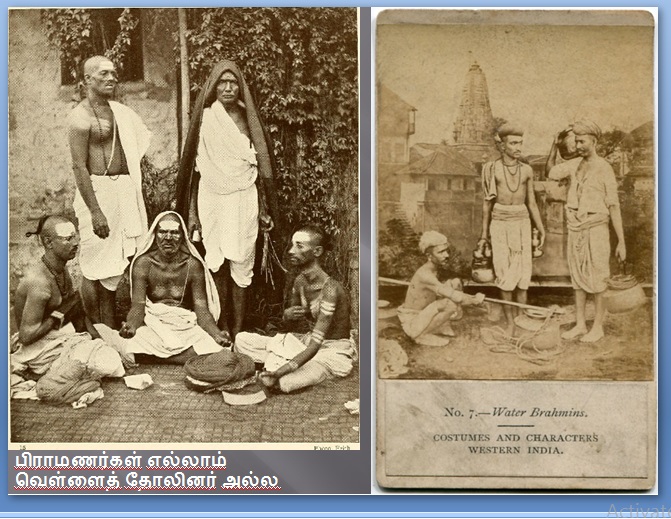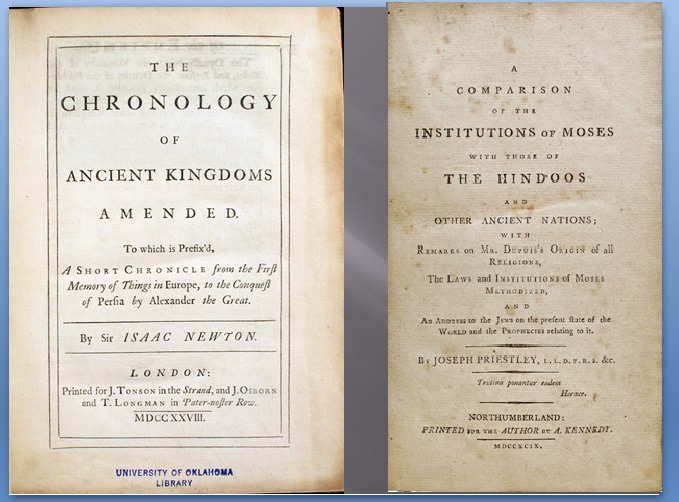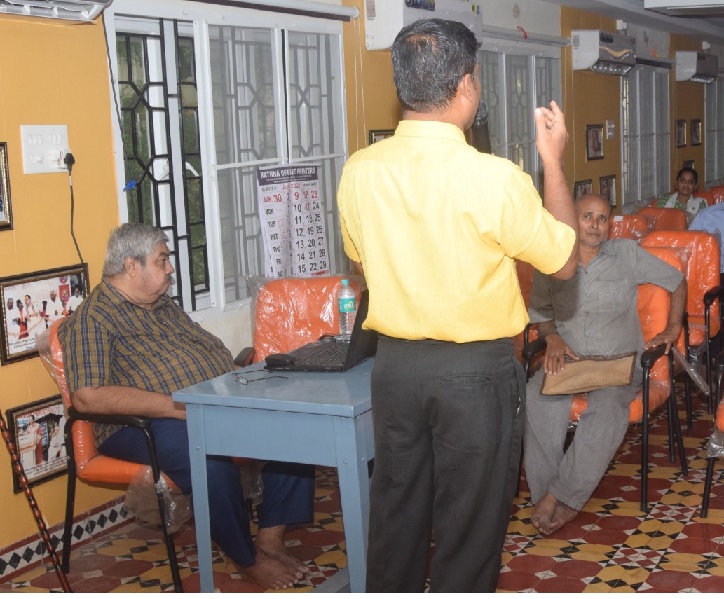
Maxmuller who created “Aryan” and Robert Caldwell who manufactured “Dravidian” out of linguistics!
The Dravidian problem: . But, surprisingly, none of these words – Dravid, viz., Dravida, Dravidi, Dravidam, Damila, Dramila, Dravida, dravida and their derivatives – is found in the ‘sangam literature’, generally represented by Pattuppattu, ettuttogai and Padinkizhkanakku.
Even in Tevaram[1], only ‘Tamizhan’ was used in the expression, “Seen Aryan, seen Tamizhan”. Only Tayumanavar of 18th century uses the word “Dravidam”, that too, to denote the Tamil language[2].
“Nama thipa nikhandu”[3], a Tamil lexicon assigned to 7, 8 or 11th century mentions ‘dravidam’ as one of the words used for Tamil.
“Senthan Divakaram”, another Tamil lexicon of 9th century mentions that ‘Dravidam’ as one of the eighteen languages spoken.
A later work “Kanthanthu Upadesa Kandam” mentions that Lord Shiva revealed to Agastya the grammar of proud language ‘Dravidam’. The authors of “Prayoga Vivegam” explain that the Sanskrit word “Tramilam” had been changed to “Tamil”, but the modern (Dravidian) scholars refute this strongly and assert that only the word ‘Tamil’ had been pronounced and used as ‘Dravida’ by the Sanskrit scholars.
Sivagnana Yogi also mentions that Sanskrit scholars used the word “Dravidam” symbolically to denote “Ten mozhi” (the language of south), that is Tamil[4]. Therefore, it is evident that the forms of ‘dravid’ and their usage by Tamils and Tamil poets were not in vogue upto 18th century. Thus, it is very clear that Tamils were not only unfamiliar with the usage of the word ‘Dravida’, but also started to denote it for their language only in the modern period, particularly about the advent of the European scholars in south India.

Anthropometry of ‘Dravidians’: Huxley (1871), Haeckal, Turner (1900), G. Oppoert, Risely (1908), E. Thruston (1909), Seligman, Sclater and others have given different and varying anthropometric data and descriptions about ‘Dravidian race’ (Table-B). They have tried to compare them with the Mediterranean, Negrito and Australoid races with the above racial parameters. Their stature / height varies from short to medium, skin / complexion from yellow brown / brown to black; head from mesocephalic to dolicocephalic; nore from broad to narrow and flat to narrow; eye colour from brown to black; hair from straight or wavy to curly but not woolly or frizzy; lips from thick to protruding and so on. If this is the racial picture of ‘Dravidians’, the picture given by the Tamil poets about the ancient Tamils is entirely different.

“Anthropometry” of the ancient Tamils: The Tamil poets have too meticulously described about head, eyes, hair, lips, ears, eyelids, hands, legs and body structure of the ancient Tamils at many places, but they never painted them with ‘black’ as has been done by the above ‘racist’ scholars. Indeed they have used different terminology for each characteristic e.g, uchi, talai, siram for head; kudimi, mayir, kundal, mudi, ori, alagam, ulai for hair; adi, siradi, sivanta adi, kal for feet; meni, uruvam, udal, agam, sariram, uru for body; euiru, muruval, pal for teeth; nodal, netri for forehead; kavul, tadai, movai for jaw; kannidazh, imai for eyelids; idazh, adaram, udadu for lips, these words are used with suitable adjectives to specify the physical characteristics of men and women. Each word is used appropriately to describe a morphological trait. Indeed, many poets, scholars and other personalities were named after a specific characteristic possessed by them, e.g,
- Asiriyar Perungannan (the teacher with big eyes),
- Perungannan (a man with bigger eyes),
- Ilangannan (a man with youthful eyes),
- Sengannan (a man with reddish eyes),
- Nettimaiyar (a man with lengthy eye brows),
- Naraimudi nettiyar (a man with white hair and high stature),
- Irumbidattalaiyar (black colour haired headed man or a man with a strong head like a iron),
- Sittalai sattanar ( Sattanar with puss-head),
- Peruntalaiyar (a man with bigger head),
Pullatru eyitranar), Kazharkkiran eyitranar (men with characteristic teeth).
The ancient Tamil literature clearly mentions that the skin colour of the ancient Tamils were that of the ‘tender mango leaves’ (mamai). The kings had the colour that of Sun. The heroines have been described that they had bright colours body like ‘unsheathed sword’ with reddish hand and feet9. Interestingly, Kalittogai stresses that women should have big mons venris, shoulders and eyes and small forehead waist and feet, as such parameters were considered as good characteristics i.e, morphology.

Divergent theories about the origin of Dravidians: About the origins of ‘Dravidians’, Keans, Morries, Sclater, Turner, Ragozin, Caldwell, Perry, Smith, Hornell and Indian scholars including Kanakasabhai have propounded many interesting, but divergent hypotheses and theories based on mythology, philology, anthropometry, and other factors10. They can be broadly grouped and explained as follows:
- Central Asian Origins: From the comparisons of morphological and some linguistic similarities, some scholars considered that Dravidians cam from Central Asia. Caldwell delved much on the ‘Scythian’ origins. Here, they coolly forgot the other famous hypotheses / theories that ‘Aryans’ also came from Central Asia. It is really surprising the if both “Aryans’ and ‘Dravidians’ come from ‘Central Asia’, then why they should have been pitted against each other for all Indian historical processes?
- West Asian Origins: As the west Asia had several ancient civilizations, it was argued that ‘Dravidians’ must have been originated from one of such civilizations by intermixing or interbreeding.
- Diffusion theory: Tracing all civilizations to an Egyptian and Mediterranean source, it was argued that ‘Dravidians’ were a branch of Mediterranean race evolved consequent to miscegenation of Mediterranean and West Asian elements.
- North-Indian and Trans-Himalayan Origins: Before, the advent of ‘Aryans’, ‘Dravidians’ were living in the north including north-eastern ad western parts of India. When the ‘Aryans’ started occupying, the Dravidians had to spread towards south. The Trans-Himalyan origins locate ‘Dravidians’ beyond Himayalas like Tbert, from where they entered India from the north east. Here, how the ‘Aryan’ factor has also been taken into consideration to explain the advent of ‘Dravidians’ in India, can easily be noticed. Interestingly, however, no scholar has ever propounded the ‘Dravidian invasion’ hypothesis or theory so far.
- Lemurian or Kumari continent Origins: To counter the above ‘out of India’ or ‘foreign’ origins, it was argued that ‘Dravidians’ came from the submerged ‘Kumari’ or ‘Lemuria’ continent.

Conclusion: The present scientific genetic study of race or human origin tracing it to Africa, non-Africa, European-Neandarthal etc., has also been briefly explained. Skin colour, cephalometry (measurement of skull), craniometry, craniology (dolichocephalic, mesocephalic, brachycephalic), phrenology, hair colour, teeth measurement, lips, eyes colour, nasal index, blood and other factors were taken, studied in the laboratories and created race. In the same way, now cell, genes, chromosomes, mitochondria and other microbiological organisms is taken and studied to find out the human origin with purity or without any miscegenation. However, both scientific studies and methodologies applied appear to go back to same race, and racial superiority and thus, trying to differentiate and discriminate against humanity. Therefore, such studies can be avoided for the welfare of humanity.

In the study of ancient Tamil literature, with a view to find out the meaning and position of ‘Ariyar’ as mentioned in their context, it has been pointed out that ‘Ariyar’ were the people or kings of north of Tamizhagam and also of Tamizghagam considering the various descriptions of them. Literary evidences of ancient Tamizhagam with other epigraphic, numismatic and literary evidences of contemporary kings of Maurya, Kalinga and Satavahana show that the exploits of Tamil kings were perhaps restricted to the boundaries of the ancient Tamizhagam and the defeat of ‘Ariya’ or northern king or kings refers to the defeat of Andhra king or kings. The word ‘Ariya’ was also used as an honorific title to certain professionals, besides the generic usage to denote the people of the land with the boundaries of the Himalayas. As the names Kosar, Nandar, Moriar, Tondaiyar and Vadugar have been used to indicate individual groups of the north, and the name ‘Ariya’ is used to denote the people or kings who were living or ruling immediately in the north of Tamizhagam, it is very evident that no racial connotation was given to ‘ariyar’ by the ancient Tamils.

Many European scientists took much interest in Indian chronology, history, social institutions etc., the examples of Sir Isaac Newton and Joseph Priestley are given above.
In the case of ‘Aryan race’, Max Mueller confessed,
“I have declared again and again that if I say Aryan, I mean neither blood nor bones,, nor hair, nor skull, I mean simply those who speak an Aryan language……………To me an ethnologist who speaks of Aryan race, Aryan blood, Aryan eyes and hair, as great sinner as a linguist who speaks of a dolicocephalic dictionary or brachycephalic grammar”.
This type of ideological studies also do not bring any peace or harmony, but pit two groups of people against each and thus the dominant group would be threatening and exploiting the other one. Thus, all these studies have not been uniting people and humanity.
Note: There was a discussion for about 40 minutes, many questions asked and clarification given. For convenience and brevity, they have been included in the above write-up at the appropriate places and context. those who attended the lecture could find the difference and others read conveniently.
© K. V. Ramakrishna Rao
12-06-2024

[1] Tevaram of Tirugnana Sambandar, 6th Tirumarai, 23rd Padigam, Tirumaraikkadu-6479.
In another place, he says, “Aryan with chaste Tamil” – 46th Padigam, Tirumarakkadu-6710.
Here, both ‘Aryan’ and ‘Tamizhan’ refer to God Shiva.
[2] சித்தர்கணம்.10:9.
[3] Sivasubramanya Kavirayar, NamaThipa Nikandu, Thanjavur University, 1985.
[4] Sabapathy Navalar, Dravida Prakasikai, Madras, 1899, p.7.

Filed under: anthropology, anti-brahman, anti-brahmin, anti-hindu, anti-vedic, antique, antiquity, archaeological remains, archaeological sites, archaeology, Ariyar, arya, Aryan, black, blood, body, bone, brahman, brahmapithecus, Brahmi, brahmin, caste, chromosome, civilization, Damila, dating, Dramila, Dravida, Dravidam, dravidar, Dravidi, Dravidian, dravidian model, dravidian monkey, dravidian stock, emigration, epigenetics, ethnicity, ethnology, ethnos, evidence, evolution, fossil, gene, genetics, genography, geo-archaeology, geoarchaeology, historicity, historiography, invade, invaded, invader, invasion, irrigation, miscegenation, New Chronology, non-Veddc, non-Vedic, Sangam, Sangam literature, skeletal remain, skeletal remains, skeleton, tamil, tamil chauvinism, tamil monkey, tamili | Tagged: arya, aryan, aryan blood, aryan invasion, aryan myth, aryan problem, aryan race, aryanism, culture, Dramila, dravid, Dravida, Dravidam, dravidan, Dravidar, Dravidi, Dravidian, dravidian model, dravidian race, dravidian stock, Dravidians, history, India, indian history, race, racialism, racism, travel | Leave a comment »














